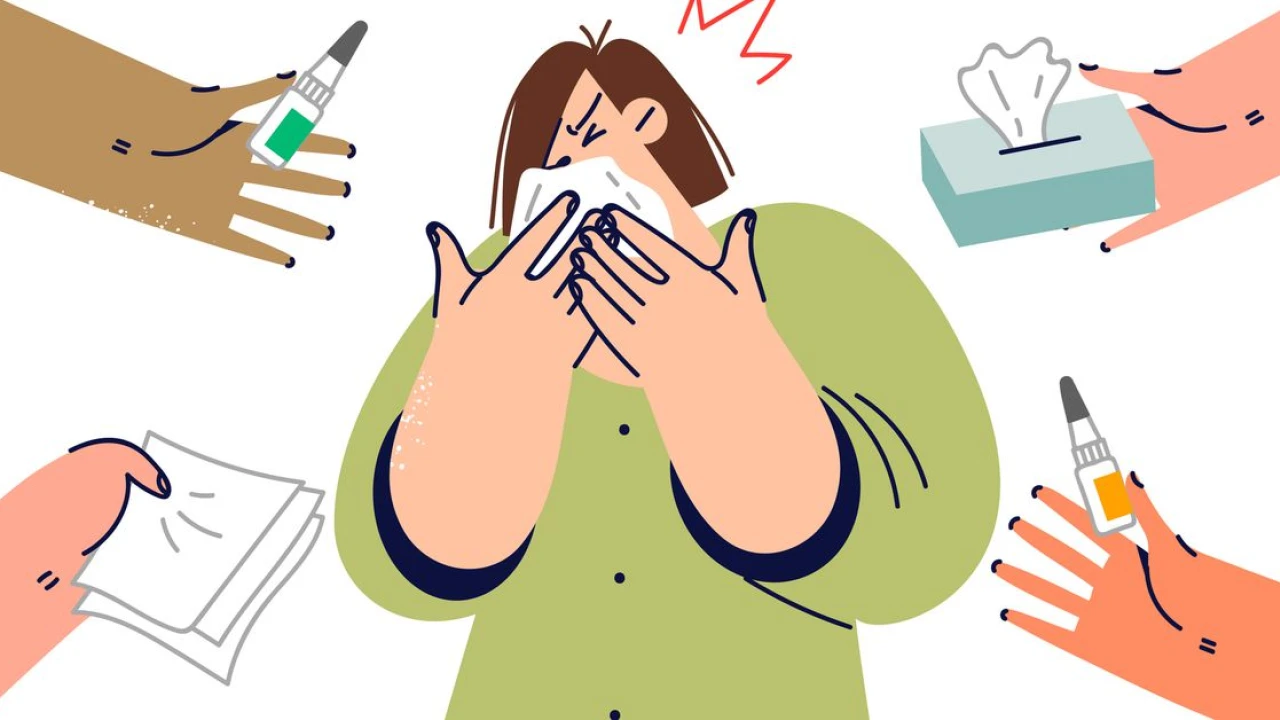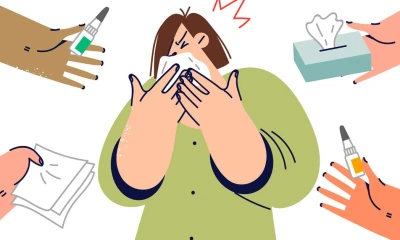-


کپتان کے کھلاڑی کے اہم انکشافات #gnn #imrankhan #pti #umarayub #news #breaking #latest #video
-


Interior Minister Mohsin Naqvi's Order To Crackdown Against drug Dealers | Breaking News | GNN
-


پی ٹی آئی میں خوشی کا سماں #gnn #pti #aliamingandapur #court #news #breaking #latest #video
-


IG Punjab Big Announcement | Breaking News | GNN

When it comes to public safety, lawmakers have two primary jobs: enacting policies that curb crime and making their constituents feel safe. It might seem like those two things go hand-in-hand; after all, if lawmakers successfully reduce crime rates, then people have less to worry about. But as has been especially evident recently, there can be a big disconnect between actual crime trends and how people feel about them.
According to a Gallup poll, for example, the share of Americans who believe that crime is an “extremely” or “very serious” problem afflicting the country recently hit an all-time high — 63 percent in 2023, up from 48 percent just five years earlier. But the crime data paints a very different picture: According to the FBI, after an uptick in crime in the immediate aftermath of the pandemic, crime rates have actually been falling across the country, with murders declining by 13 percent between 2022 and 2023. In New York City, one of the cities Republicans often point to as a supposed example of lawlessness, shootings are down 25 percent, and homicides are down 11 percent.
“We keep getting a lot of really great information suggesting that violent crime is declining — in some cases extremely sharply,” said Ames Grawert, senior counsel at the Brennan Center’s Justice Program. “At the same time, there’s a real lag between what the data show and how people perceive the data.”
That gap between reality and public perception is proving to have serious consequences.
“Elected officials don’t govern based on necessarily what the data say,” Grawert said. “They govern on what the data say and how the public perceives it.” So as long as people continue to feel that crime is a problem — a reality prompted by an early pandemic crime spike and subsequently fueled by media reports that often overstated the rise in crime — lawmakers feel pressured to respond to a problem that, by and large, appears to be subsiding.
That’s why a slew of cities and states have started adopting laws that hark back to the tough-on-crime approach of the 1980s and ’90s, a trend that has crossed party lines. Some jurisdictions, for example, have dramatically increased police presence, cracked down on homeless encampments, and imposed harsher penalties for petty crimes.
These policies, in both Republican and Democratic jurisdictions, threaten the meaningful progress that criminal justice reform advocates achieved in the past decade, including a reduction in the prison population. This kind of legislation is both shortsighted and irresponsible: Many of these bills are getting enacted after crime began falling, which not only means they’re likely unnecessary, but they could also potentially pave the way for a reinvigorated era of mass incarceration.
New crime bills are not responding to actual crime trends
Louisiana was once known as the prison capital of the world, with more prisoners per capita than any other US state, or country for that matter. In 2012, according to the Times-Picayune, one in 86 adults in the state was serving time in prison, which at the time was almost twice the national average. The racial disparities were staggering, too: In New Orleans, one in seven Black men was either in prison, on parole, or on probation.
But following a wave of criminal justice reforms across the country, some of which had bipartisan support, Louisiana lawmakers sought to change the state’s reputation. They succeeded, overhauling crime laws and ultimately reducing the prison population. The number of people held in prison for nonviolent offenses, for example, declined by 50 percent between 2016 and 2023.
Legislators in the state recently passed changes to its criminal justice system that will likely reverse that pattern. The new laws will impose harsher penalties and longer sentences for a range of offenses, including carjackings and drug dealing, make it significantly harder to qualify for parole or overturn a wrongful conviction, and treat 17-year-olds who are charged with a crime as adults.
But deep-red Louisiana isn’t the only place this sort of change of heart is happening. In San Francisco, voters approved ballot measures in March that would expand police surveillance and impose drug tests on welfare recipients — showing a public appetite, even among liberal voters, to do away with a more forgiving law enforcement approach. And in New York, Gov. Kathy Hochul, a Democrat, recently deployed hundreds of National Guard troops to patrol the city subway system, despite the fact that crime on the subway was relatively rare and already on the decline.
One area getting a lot of lawmakers’ attention is drug enforcement, especially against the backdrop of rising overdose deaths across the country. Oregon’s Democratic governor, for example, recently signed a bill that recriminalized possession of drugs in the state, reversing a decriminalization ballot measure that voters passed in 2020.
But criminalization of drugs in particular is an easy way for lawmakers to say they’re responding to a problem without actually committing the necessary resources to address it, like making treatment centers more accessible.
“The laws that are being proposed to counteract this by punishing people are not being proposed with public safety in mind,” Wanda Bertram, a communications strategist at the Prison Policy Initiative, told me. If they were, she said, they would be accompanied by an expansion of programs, including treatment centers and safe injection sites.
Part of the tough-on-crime trend can be explained by the fact that an election is coming up, and politicians are concerned that the public’s sentiment about crime might sway voters. Fear-mongering about crime — and law-and-order campaigns in particular — is especially popular among Republicans every election cycle. This time around, Democrats seem to be responding not by pointing to declining crime trends, but by trying to appear even tougher on crime than their Republican counterparts.
Given people’s attitudes toward crime — and the wrong public perception that crime is on the rise — Democrats might be justifiably worried about appearing out of touch if they deny their constituents’ distorted reality. But that just leads to bad policymaking as a result.
“It’s a punitive turn in American policymaking that reflects a political establishment that doesn’t have any good ideas,” Bertram said. “Republicans love to make penalties harsher and sentences longer. To see Democrats bandwagoning on it is sinister and new and reflects a fear that they don’t have enough in their platform.”
A renewed era of mass incarceration
After the number of prisoners in the United States peaked at around 2.3 million people in 2008, a range of criminal justice reform bills succeeded in bringing that number down by reducing sentences, decriminalizing drugs, and by prosecutors being more selective about which laws to enforce and against whom. And in 2020, after the Covid pandemic prompted lawmakers to release low-risk prisoners, the prison population dipped to around 1.7 million.
In recent years, the number of people in prison has been starting to creep back up, increasing by 2 percent nationally between 2021 and 2022. In some states, the rise has been much more pronounced, like in Mississippi, where the prison population grew by 14.3 percent in the same period. That’s in part because crime did indeed rise during the pandemic, but it’s also likely the result of a stricter law enforcement approach to low-level crimes. The overblown shoplifting panic, for example, prompted many states and local prosecutors to impose harsher penalties on offenders, despite the fact that shoplifting, like other crimes, was trending downward.
It’s too early to know just how much the new tough-on-crime laws will affect the overall prison population, but they could potentially erase years of progress and further entrench America’s era of mass incarceration as a permanent reality.
It’s easy for lawmakers to forget that when the public seems desperately afraid of a crime wave that seems to no longer exist. “There’s a sort of sense of ‘We have to do something, this is something, let’s do it,’ rather than a sober-minded, careful response to the data and the history, and what we know works and what doesn’t,” Grawert said.
Indeed, it’s important for lawmakers to take a long-term approach to crime instead of trying to find a quick fix to a short-term problem. One way lawmakers can remind themselves of that is this tidbit in public polling: The same poll that showed that 63 percent of Americans think crime is a very serious problem nationally also showed that only 17 percent believed crime was an extremely or very serious problem in the area they lived in. That could be because while they might read about a supposed crime wave across the country, they’re not actually seeing any evidence of it in their own neighborhoods.
Even if new tough-on-crime laws are intended to assuage the public’s fears about crime, they’re seemingly unnecessary and end up hurting everyone in the long term. After all, policy responses like New York sending the National Guard to the subway, which only visibly reinforce the idea that there’s an active threat, won’t only make people feel less safe; they’ll likely lead to more arrests for low-level offenses, too.
Lawmakers should ask themselves: What would that actually achieve?
Regional
Electrocution adversely burns five in Lahore
The rescue team reached the spot and shifted the victims to the hospital in critical condition

Lahore: In an unfortunate incident, five people were badly burnt and injured due to electric shock in the provincial capital Lahore.
According to the details, the tragic incident of electrocution took place in Gul Bahar Colony in Shalimar area of Lahore, where five people in the room were electrocuted due to a short circuit, as a result of which they got badly burnt.
After receiving information about the incident, the rescue team reached the spot and shifted the victims to the hospital in critical condition where they are being provided medical treatment.
Regional
4 tips for dealing with a ferocious allergy season
Finding relief for seasonal allergies can be a challenge. Here’s what can help.

It’s a sneezy, snotty, itchy-eyed time for many Americans — perhaps more so than ever before.
Seasonal allergies are the effects of the immune system’s overreaction to pollen spewed into the air by trees, grasses, and ragweed, most commonly in the spring (although really, year-round). Climate change is making allergy season worse: As warm seasons get warmer and last longer, more plants release more pollen for longer periods. Although the risk of developing allergies is hereditary, experts suspect higher pollen levels are tipping more genetically prone adults into developing seasonal allergies for the first time.
If your airways are among the afflicted, you know that finding relief can be a challenge. There’s lots of advice and an overwhelming array of products out there, and it’s sometimes hard to know what’s true and where to begin.
Here are a few tips for thinking through what’s causing your symptoms and what to do to stop the streams of liquid constantly coming out of your head.
Not everything that makes your nose run is allergies
Lots of things make people sneezy and snotty — who cares what the reason is? Well, you should.
One of the biggest mistakes people make in the course of seeking relief from allergy symptoms is thinking they have an allergy when they don’t, says Jonathan Bernstein, a Cincinnati allergist and lead author on a recently published review article on allergic nasal symptoms. “So first and foremost, are they diagnosed properly?”
When an allergic response is responsible for nasal symptoms, what’s happening in the background is an invisible biochemical cascade involving lots of moving parts, many of which are the targets of allergy medications. It’s a very different process from what happens when airways are just irritated (for example, by dust, smoke, or perfume), infected (as with a cold or another infection), or reacting to changes in temperature or pressure.
Therefore, treating a non-allergic cause with an allergy medicine won’t work and can lead to unnecessary side effects, expense, and frustration.
Allergic reactions to pollen don’t usually happen the first time you’re exposed to it. The first time your immune system meets those tiny particles, it merely determines that particular type of pollen is an outsider it doesn’t like. Your immune system might react a little bit in the moment, perhaps with a little sneezing and a mild runny nose. The most consequential work it’s doing at this stage is teaching the rest of your immune system to overreact next time the invader shows up and storing the memory of that invader in memory cells. This part of the allergic response is called sensitization.
The next time your immune system meets that pollen, it’s primed — and it reacts fast, unleashing hellfire on the invader within 30 to 60 minutes. Some of the key players in this quick response are mast cells, which release histamine. This chemical dilates the nasal blood vessels, causing inflammation; gooses the sensory nerves in the face, causing sneezing and nasal itching; and stimulates mucus-producing glands in the nose, leading to water, water everywhere.
One way to tell your symptoms aren’t allergic is by taking note of what they include: If a fever accompanies irritated airways, it’s more likely you have an infection (likely a viral cold) than allergies. Also, if your symptoms don’t respond well to allergy medications, that’s a good clue you might not be dealing with an allergy, says David Shulan, a retired allergist who used to practice in Albany, New York. When medications seem variably effective — or if they’re effective but you can’t figure out what you’re allergic to or your symptoms are severe — he says a helpful next step might be allergy testing.
Severe symptoms are subjective, says Pedro Lamothe, a pulmonologist who treats and researches allergic asthma and lung disease at Emory University in Atlanta. “If the symptoms are resistant to treatment [or] are impacting your daily life because you can’t be going outside, because you can’t do your job,” he says, “that’s the definition of severe symptoms.”
If you do get allergy testing, it’s best to get it done by a physician who’s an allergy specialist. “You have to correlate it with the individual’s history and their exposure,” Bernstein says.
Letting allergy symptoms run their course won’t “build immunity” to the allergen. It just makes it worse next time.
It’s not uncommon for people with seasonal allergy symptoms to just ride them out. The reasons for this vary, but sometimes, people power through because they believe doing so will make future allergic reactions land softer.
That’s the opposite of the truth, says Lamothe. More allergic reactions just means more sensitization — that is, more opportunities for your immune system to learn how to overreact to a stimulus and to store that information so it can react even more ferociously next time. Letting allergic reactions run their course won’t make you stronger, he says, “You’re going to make your allergic responses stronger.”
Another consequence of waiting to treat an allergic reaction: You’ll ultimately need much more medication to subdue your symptoms in their later stages than if you’d treated the response in its earlier stages. “These medications are much more effective at preventing the symptoms that are getting rid of them once they’ve already started,” says Lamothe.
It’s best to stop the allergic reaction before the cascade gets into motion and before the immune system gets too smart for your own good — and it’s ideal to prevent the reaction altogether, says Lamothe. He recommends people with persistent seasonal symptoms actually start taking their medications before allergy season starts. In the relatively temperate climes of Georgia, that might mean starting the medications in February.
Taking a proactive approach is particularly important for people with seasonal allergy-related asthma, which can be life-threatening. Asthma is effectively an allergic reaction localized to the lungs; in allergy-related asthma, the allergic reaction starts with the upper airways — the nose, mouth, and throat — and extends to the lungs, leading to wheezing, coughing, and shortness of breath.
If you have seasonal allergies that lead to breathing problems, take note of how often you use your asthma medications, says Cherie Zachary, an allergist who practices in Minneapolis. If you’re using a rescue medication (like an albuterol inhaler) more than three times a week or you’ve needed to take an oral steroid like prednisone more than once in the past year, get additional help controlling both your asthma and your allergies, she says.
People with allergy-induced asthma sometimes get so used to breathing poorly during certain seasons — or even year-round — that they forget it’s not normal to feel breathless at baseline. That may be especially true when many others around them also aren’t breathing well. Older patients may also have had bad experiences with ineffective treatments or with the medical system that administers them, leading them to put off getting care even when they’re feeling really ill.
That should no longer be a deterrent. “We have good treatments now for allergies and asthma, which we certainly didn’t have 35 years ago,” says Zachary.
The higher your risk of allergy-related asthma, the lower your threshold should be to seek care if you’re having uncontrolled symptoms during allergy season, she says. “Especially for the asthma patients, don’t ignore your symptoms.”
Certain risk groups are more likely to have life-threatening outcomes from pollen exposure and should have a lower threshold for getting treatment
Seasonal allergies play out differently in different racial and ethnic groups in the US. White adults are more likely to be diagnosed with seasonal allergies than are others, but in one study, Black people were twice as likely as white people to end up in an emergency room with pollen-related asthma exacerbations. More broadly, Black and Puerto Rican Americans are more likely than others to have asthma of any type, including severe and life-threatening flares.
The reasons for these disparities are complicated, but are in part related to how well people’s allergies are controlled on a day-to-day basis — which is itself related to issues of insurance coverage and health care access and trust. Environmental factors may also be at play: Exposure to industrial toxins and air pollution is thought to increase people’s risk of developing allergies and asthma, including the kinds related to pollen. Higher concentrations of these pollutants in neighborhoods and workplaces where people of color live could in part explain the higher prevalence of seasonal allergies — and their most severe consequences — in these groups.
“When you look at the risk factors and you look at redlining, they really do correlate,” says Zachary.
Your first-line allergy medication might not be one you take by mouth
The best treatment for allergies is prevention, and experts have lots of strategies for reducing your face time with whichever allergen is your particular nemesis.
Shulan suggests minimizing your time outdoors during peak pollen time, which is typically around midday; there’s usually less pollen in the air before dawn, after sunset, and during or immediately after rain. You can also try wearing a face mask outdoors if the air temperature doesn’t make it intolerable, says Lamothe.
As best you can, avoid tracking pollen into your home: Wipe down your face (including eyebrows and any facial hair), change your clothes and remove your shoes when coming home (and keep them outside the bedroom), and consider removing makeup, which pollen loves to stick to. Keeping bedroom windows closed and running an air conditioner with or without a separate air filtration unit can also help minimize nighttime symptoms. If you typically hang your clothes outside to dry, avoid doing so during allergy season. Cleaning the surfaces of your upper airways with saline nasal spray or nasal irrigation (like with a Neti pot) can also be helpful.
While some people advocate eating local honey to reduce allergy symptoms, several experts told me there isn’t great data to support this practice, but “the placebo effect is remarkably powerful,” said Shulan.
Even with these preventive measures, many people need pharmaceutical help to manage their symptoms, and the array of over-the-counter allergy medicines to choose from is literally dizzying.
For many people with moderate to severe seasonal allergies, a nasal spray containing a corticosteroid is a good place to start, says Lamothe. These include fluticasone (Flonase), triamcinolone (Nasacort) mometasone (Nasonex), and budesonide (Benacort). Unlike steroids taken by mouth, these act only on the interior surfaces of the nostril and upper airways where they land, so they’re relatively low-risk. Still, aim the nozzle outward when you spray to avoid drenching the nasal septum, which can lead to nosebleeds. It might take a few days to feel relief from these medications, so don’t expect immediate results.
Antihistamines are faster-acting and are available as nasal sprays, eye drops, and oral medications. Again, the formulations you don’t take by mouth are less likely to have systemic effects. Modern, second-generation oral antihistamines — which include cetirizine (Zyrtec), fexofenadine (Allegra), and loratadine (Claritin) — are much less likely to cause sleepiness than diphenhydramine (Benadryl), the most common of their first-generation counterparts. Some people find cetirizine somewhat sedating; levocetirizine dihydrochloride (Xyzal), a variant of the drug, avoids this effect.
Although some people appreciate the sedating effects of Benadryl, experts advise against taking it on a regular basis due to emerging data about its associations with dementia. They also recommend caution with decongestants: Occasional doses of pseudoephedrine are safe for many adults, but they can raise blood pressure and heart rate and are not safe for children. Antihistamine nasal sprays like oxymetazoline (Afrin) are dependency-forming and should not be used for more than a few days running.
If allergy meds aren’t controlling your symptoms or you need more medication than you want to take to control your symptoms, immunotherapy might be an option for you, says Shulan. Most people know this treatment as allergy shots, which involve getting progressively higher amounts of the protein you’re allergic to injected under your skin until your immune system stops overreacting to it, usually for around three to five years.
More recent oral formulations mean this treatment can be administered without needles for certain allergies. To date, the Food and Drug Administration has approved oral immunotherapy to treat people allergic to ragweed, grasses, and dust mites.
Oral allergy drops are also on the retail market, often marketed as a “natural” solution to allergies. However, these often-pricey products are not FDA-approved and the evidence to show they make things better and not worse just isn’t there, says Zachary. “Natural is not always neutral,” she says.
-

 Pakistan 22 hours ago
Pakistan 22 hours agoCM Punjab shows determination to raise standards of living of Labours
-

 Pakistan 2 days ago
Pakistan 2 days agoDriving license exclusively for students
-

 Pakistan 1 day ago
Pakistan 1 day agoRana Sanaullah appointed as advisor to PM on political affairs
-

 Business 1 day ago
Business 1 day agoGold price plunges Rs2,000 per tola in Pakistan
-

 Pakistan 1 day ago
Pakistan 1 day agoSC adjourns hearing IHC judges’ letter case till May 7
-

 Pakistan 17 hours ago
Pakistan 17 hours agoIPP gets another shock
-

 Pakistan 19 hours ago
Pakistan 19 hours agoZardari meets MQM leadership, discusses law and order situation in Karachi
-

 Pakistan 19 hours ago
Pakistan 19 hours agoGovernor KP Ghulam Ali meets Nawaz Sharif













